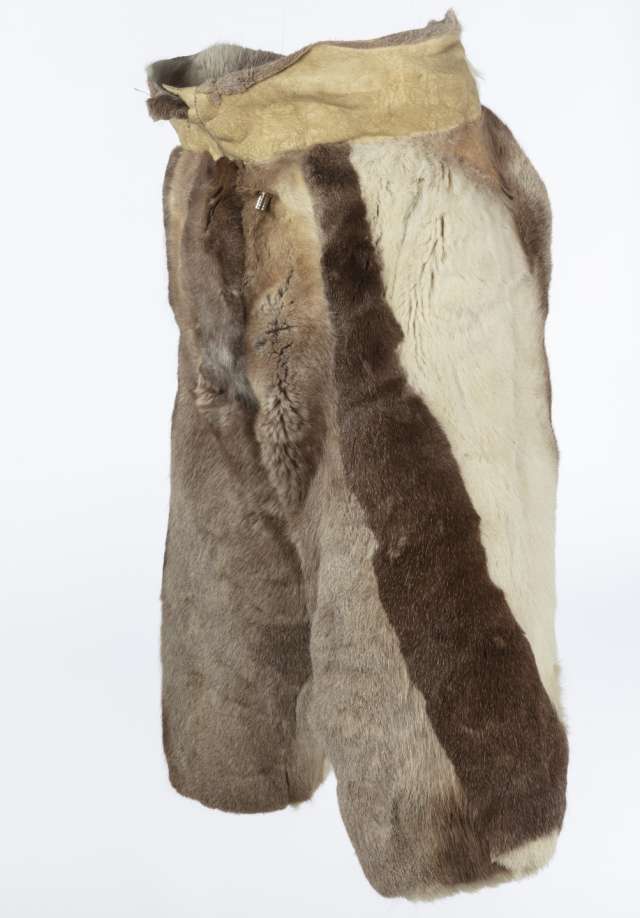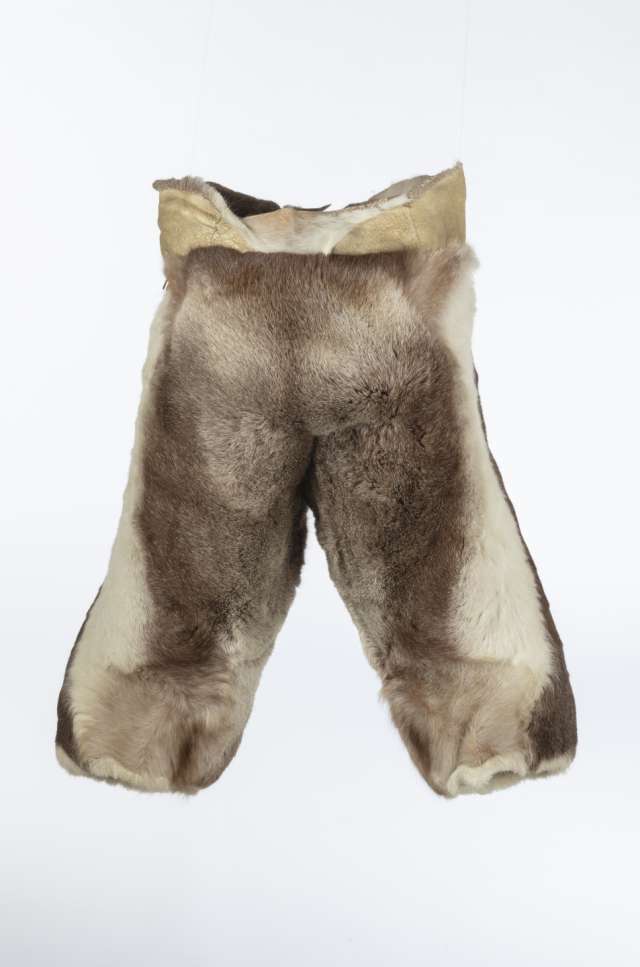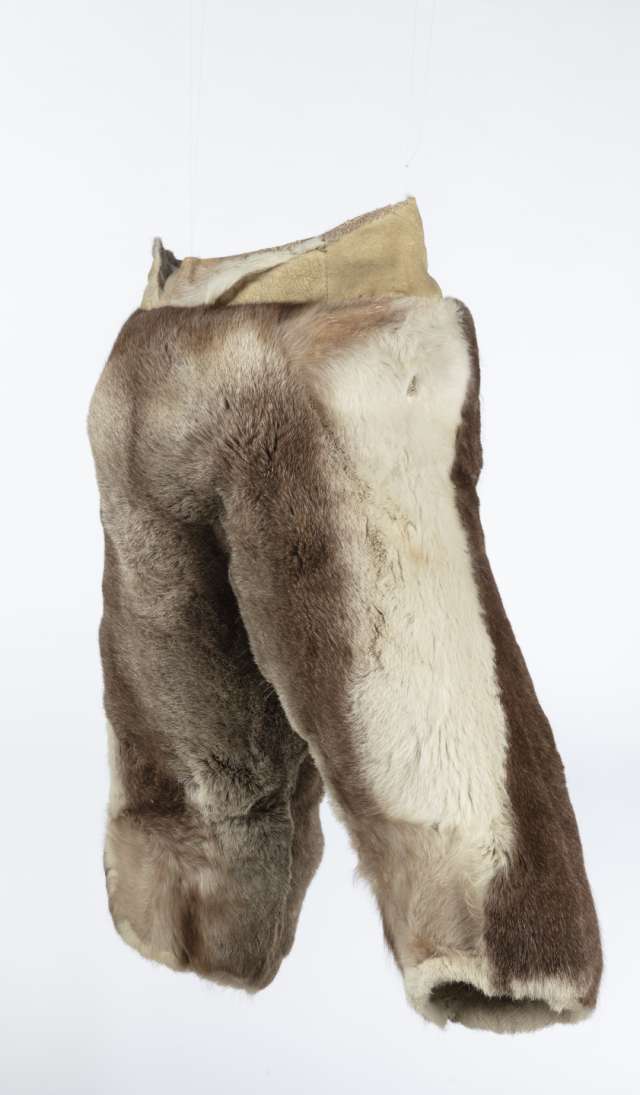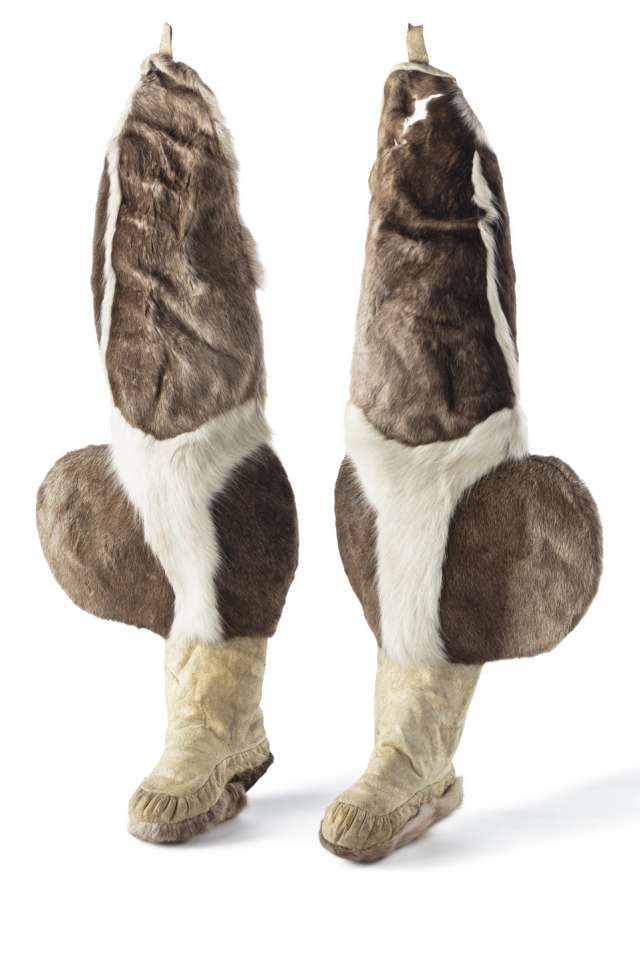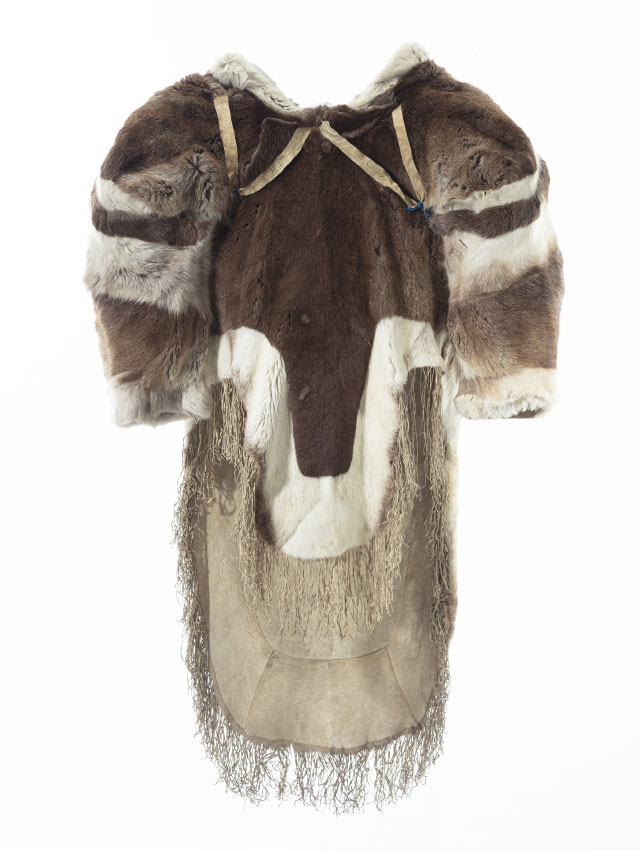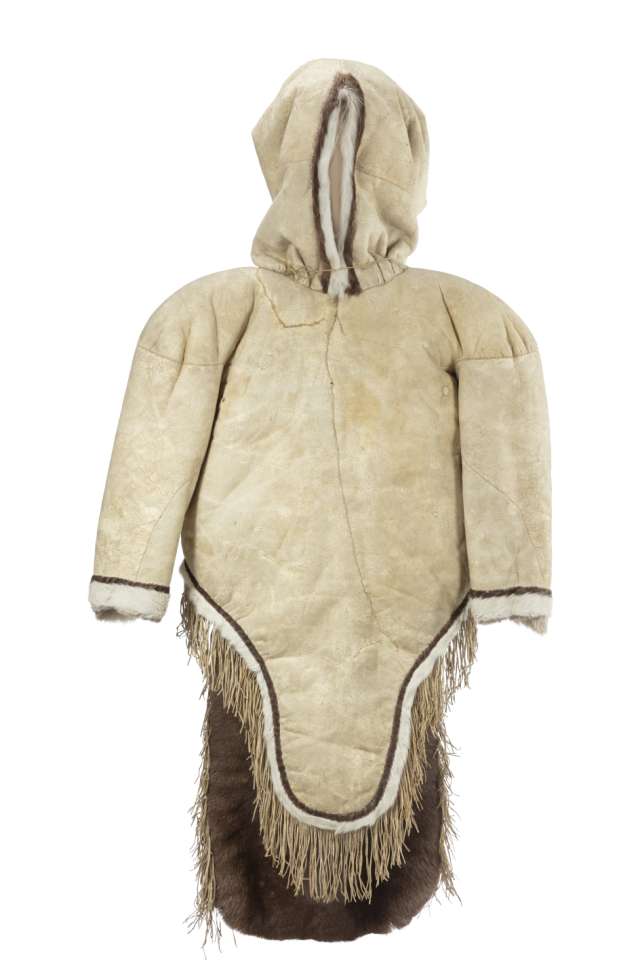Pants (qarliik arnaqsiut)
Female pants with vertical brown and white stripes were worn year-round by all female individuals, from girls to elderly women. They were worn with the fur on the outside and went all the way down to the boots. Generally, they had a belt loop on the back through which a belt could be passed to tighten the waist. A roughout leather waistband, named a majuqviq, could be used to pull up the pants more easily.
Most people now use modern windproof pants that have pockets and zippers and are made of cloth or synthetic fabrics. Nonetheless, these caribou-skin pants, though scarce, are still made and are generally worn by some community members when they go hunting or attend cultural events.


